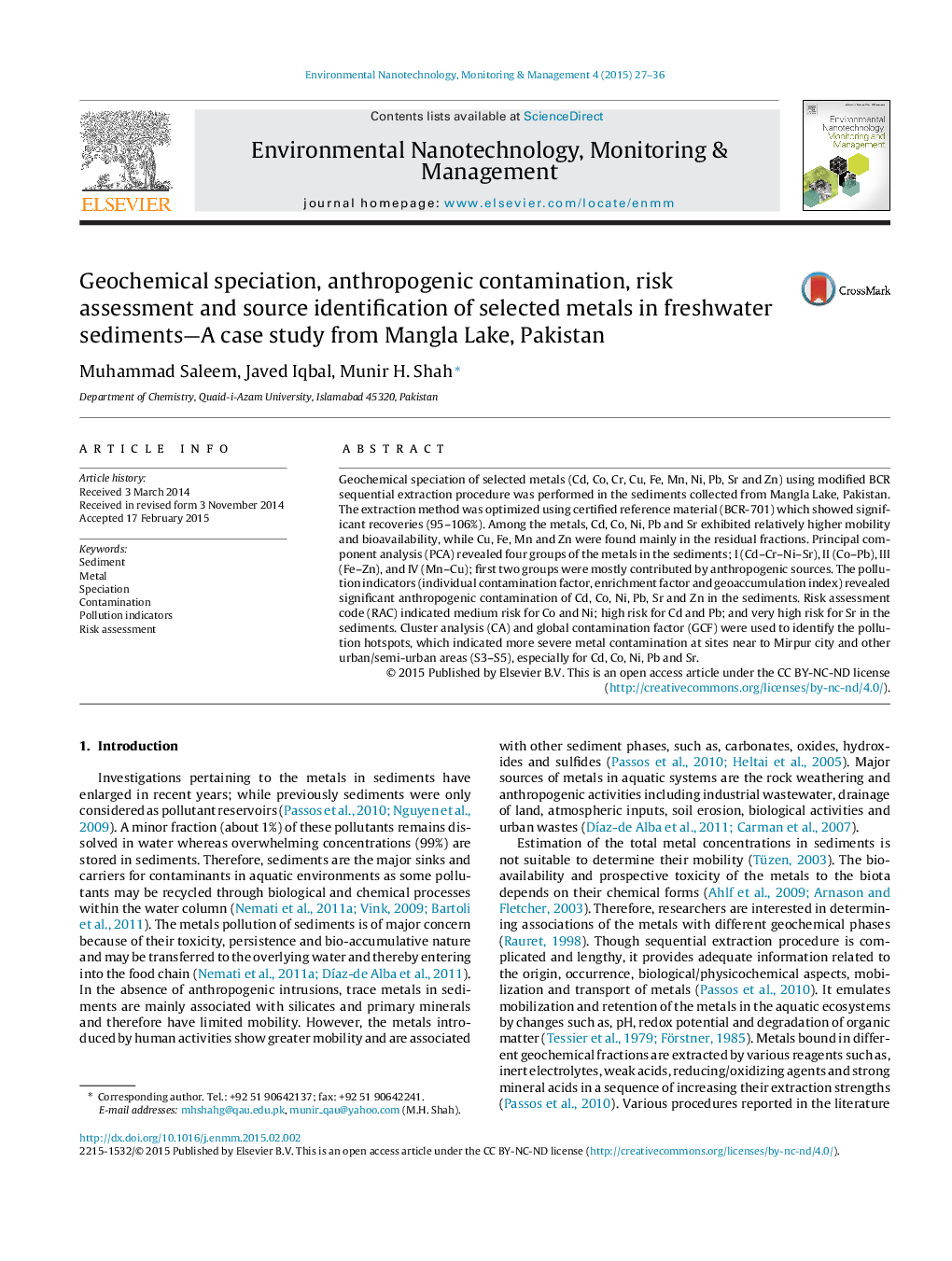| Article ID | Journal | Published Year | Pages | File Type |
|---|---|---|---|---|
| 4424203 | Environmental Nanotechnology, Monitoring & Management | 2015 | 10 Pages |
•Higher mobility and bioavailability was noted for Cd, Co, Ni, Pb and Sr.•The sediments were highly contaminated with Cd, Pb, Ni, Co and Sr.•Highest contamination was found in the sites close to urban and up raising areas.•PCA revealed significant anthropogenic contributions of the metals in sediments.•Pollution indicators demonstrated high risk associated with these sediments.
Geochemical speciation of selected metals (Cd, Co, Cr, Cu, Fe, Mn, Ni, Pb, Sr and Zn) using modified BCR sequential extraction procedure was performed in the sediments collected from Mangla Lake, Pakistan. The extraction method was optimized using certified reference material (BCR-701) which showed significant recoveries (95–106%). Among the metals, Cd, Co, Ni, Pb and Sr exhibited relatively higher mobility and bioavailability, while Cu, Fe, Mn and Zn were found mainly in the residual fractions. Principal component analysis (PCA) revealed four groups of the metals in the sediments; I (Cd–Cr–Ni–Sr), II (Co–Pb), III (Fe–Zn), and IV (Mn–Cu); first two groups were mostly contributed by anthropogenic sources. The pollution indicators (individual contamination factor, enrichment factor and geoaccumulation index) revealed significant anthropogenic contamination of Cd, Co, Ni, Pb, Sr and Zn in the sediments. Risk assessment code (RAC) indicated medium risk for Co and Ni; high risk for Cd and Pb; and very high risk for Sr in the sediments. Cluster analysis (CA) and global contamination factor (GCF) were used to identify the pollution hotspots, which indicated more severe metal contamination at sites near to Mirpur city and other urban/semi-urban areas (S3–S5), especially for Cd, Co, Ni, Pb and Sr.
